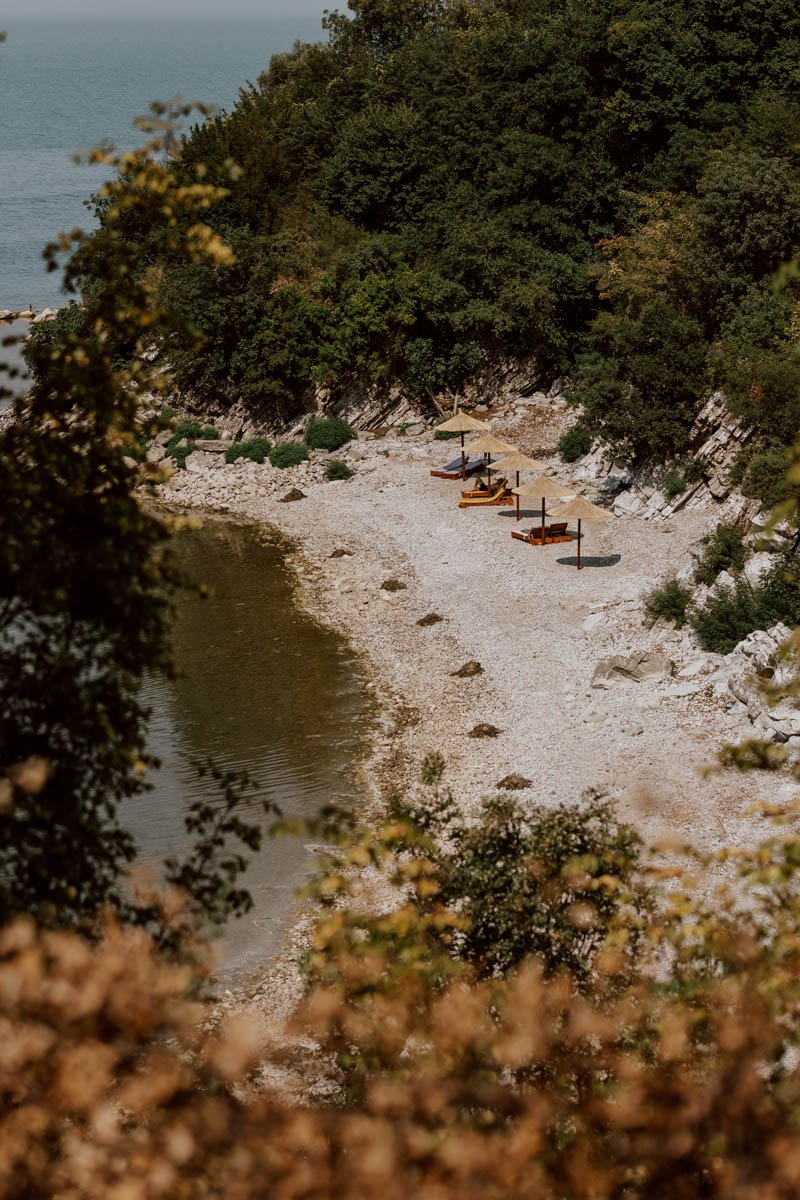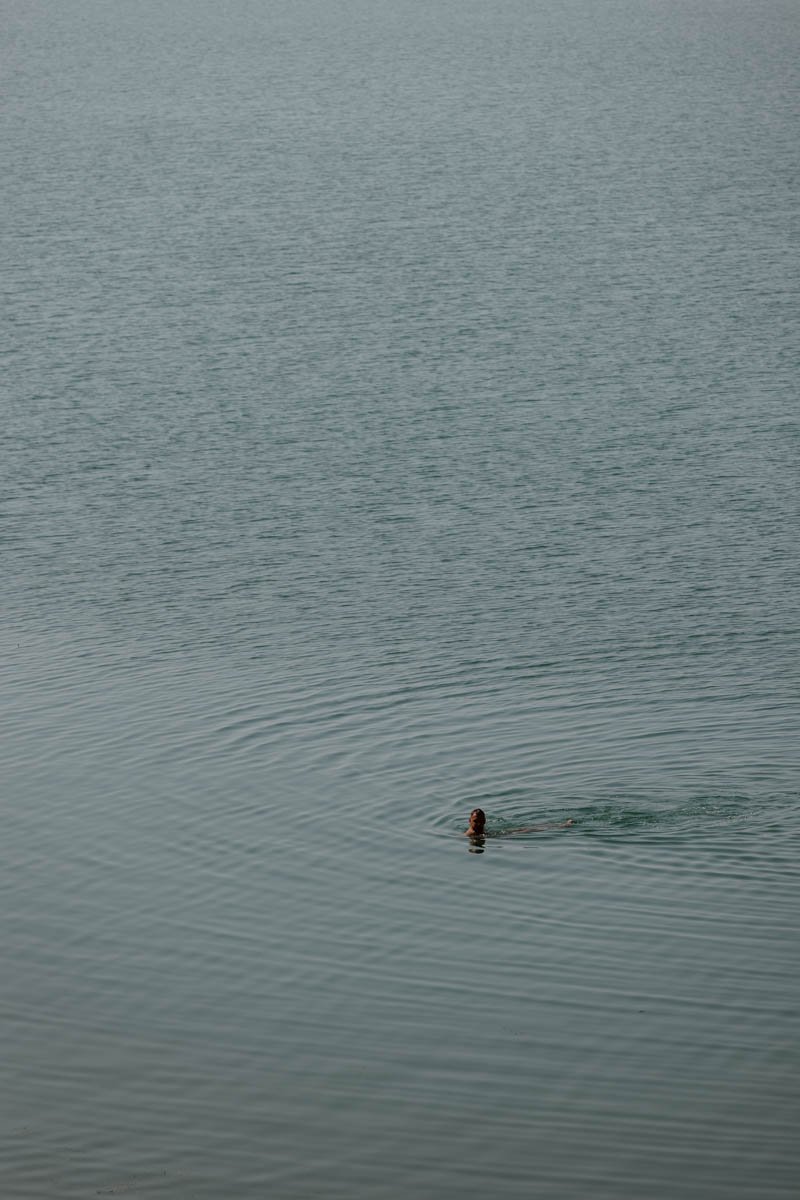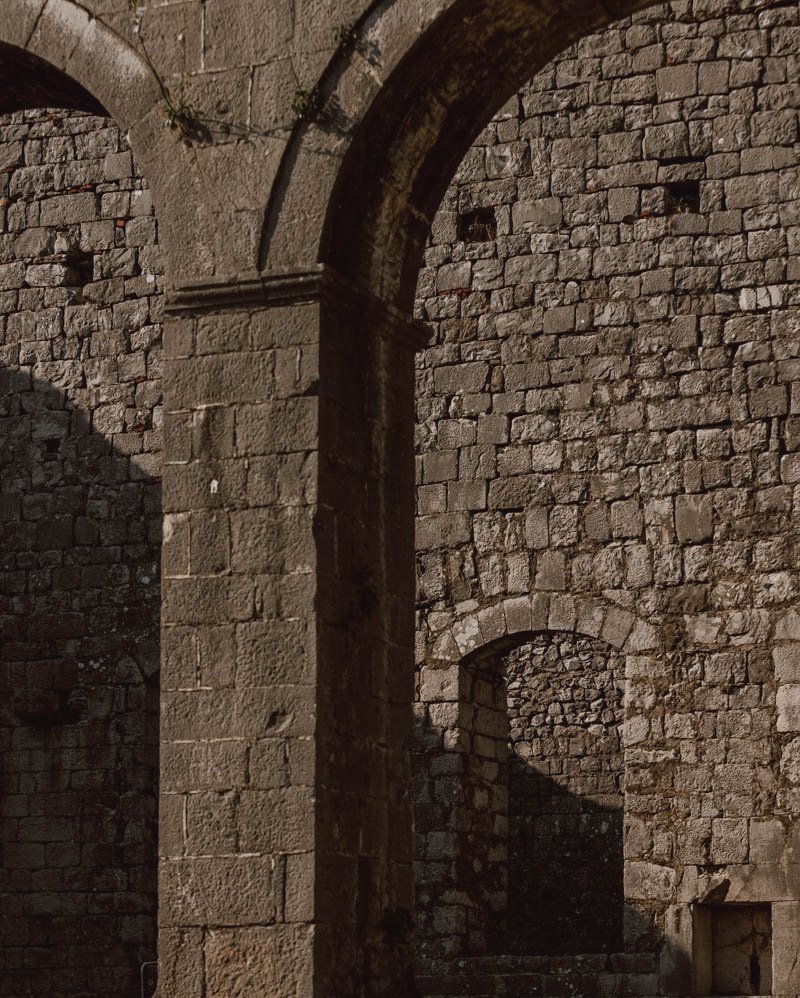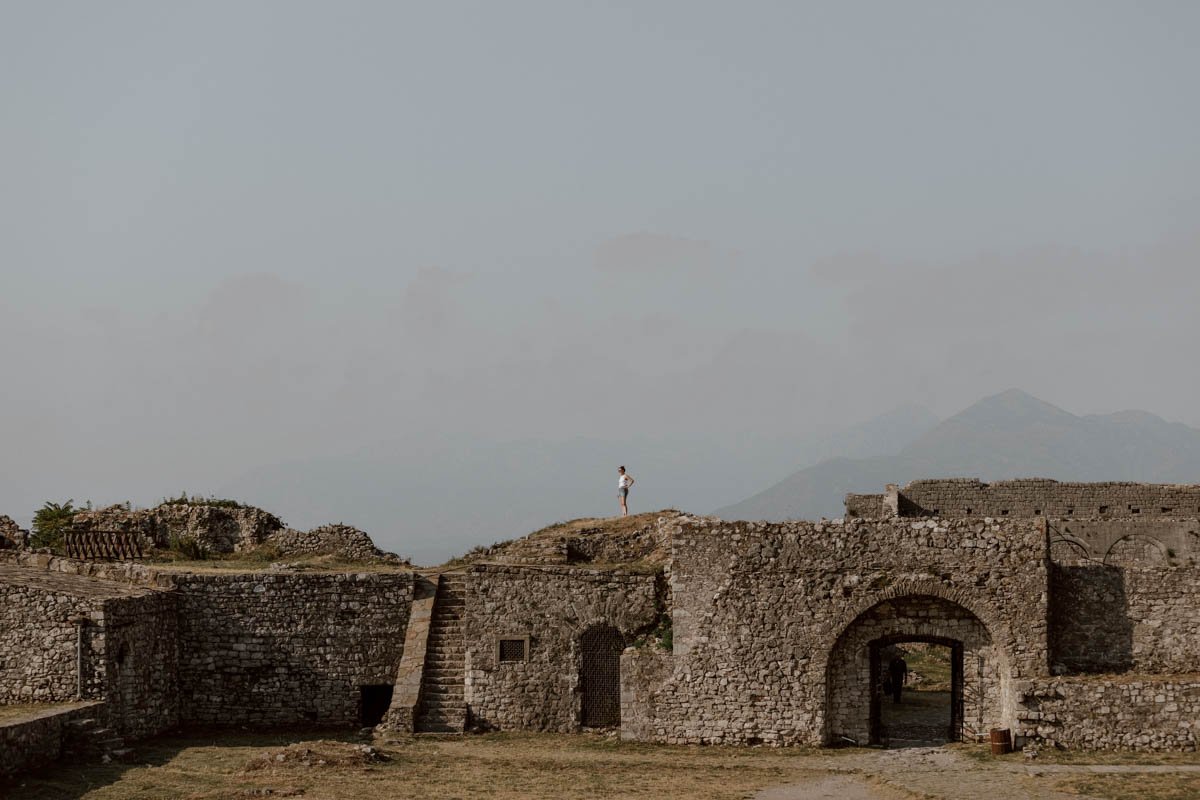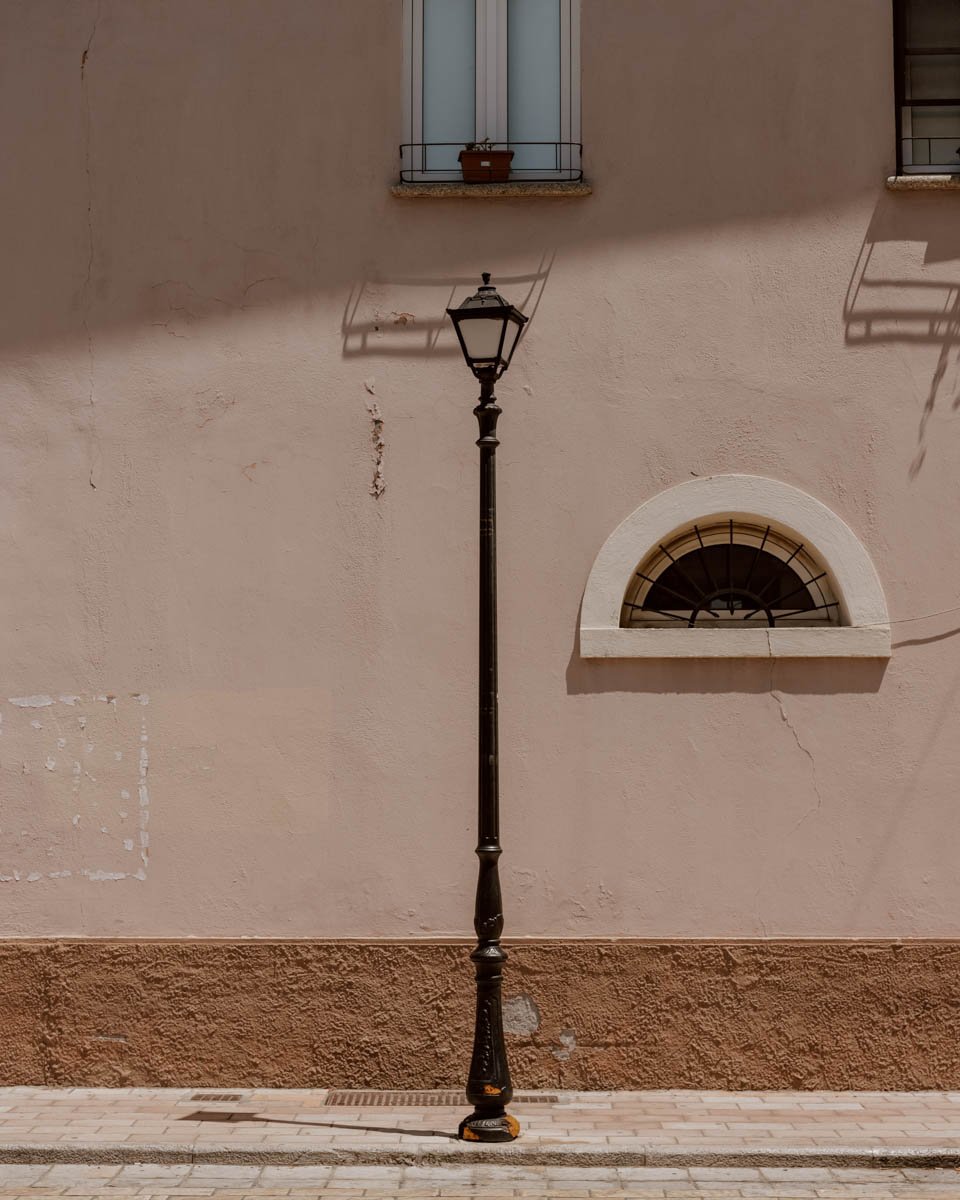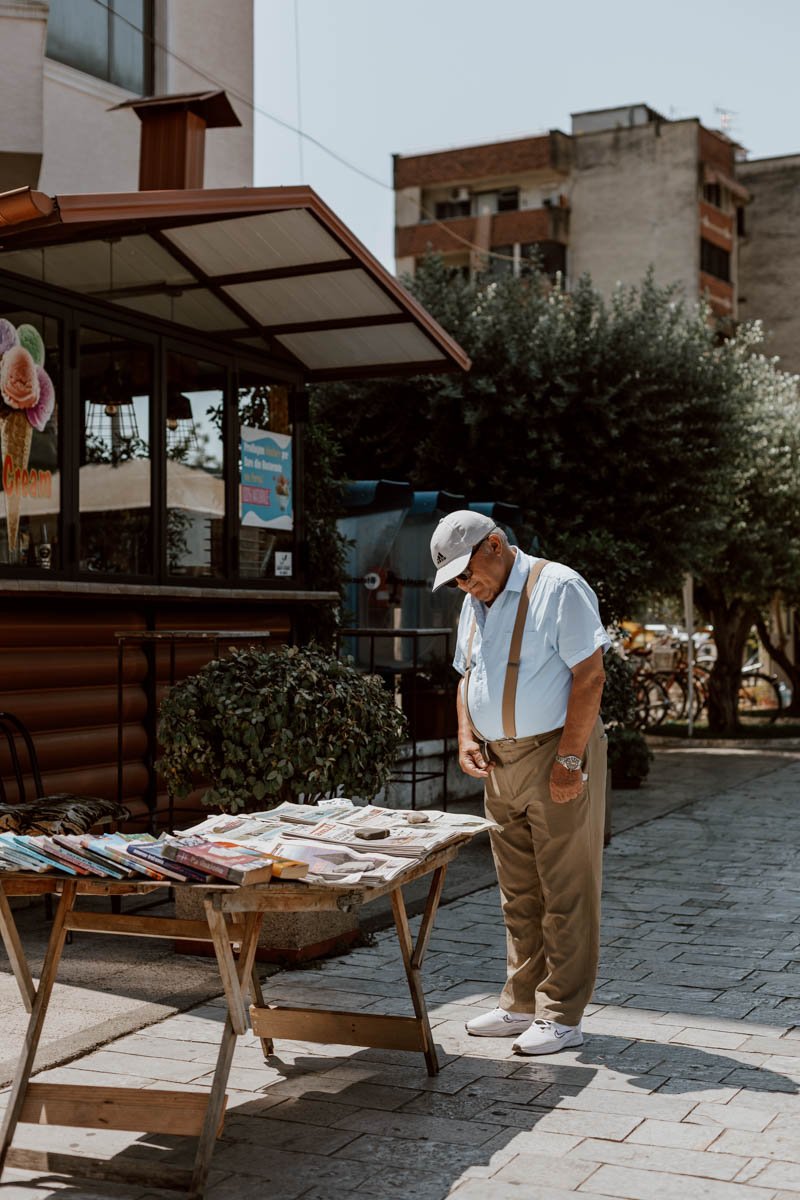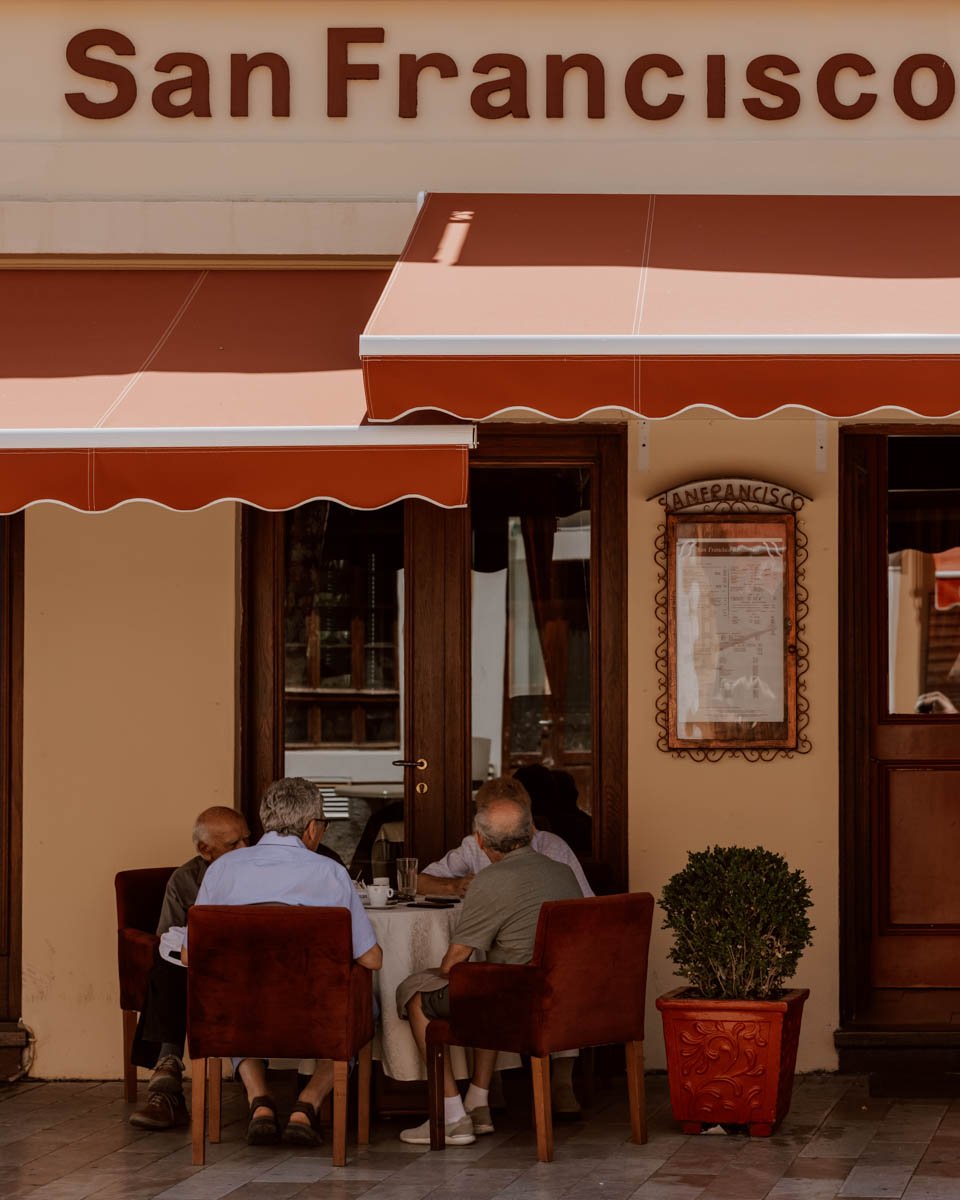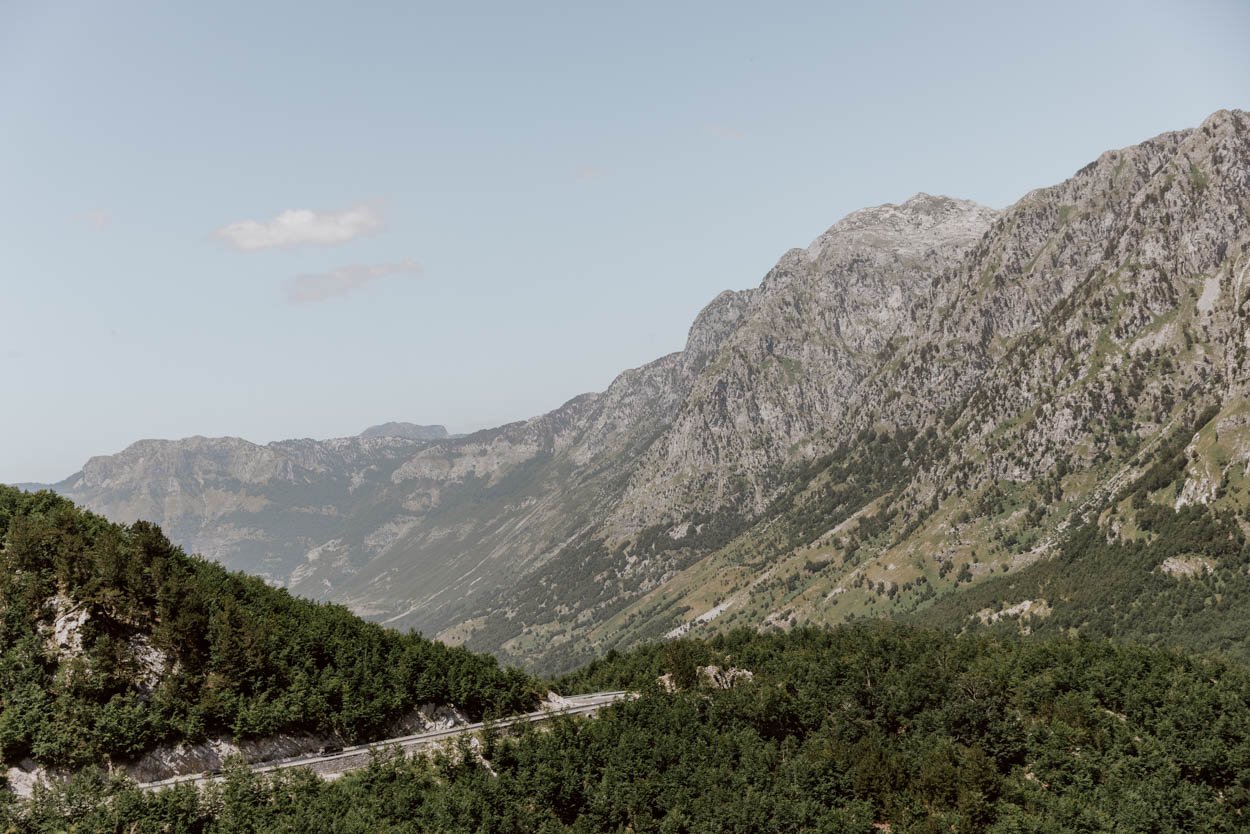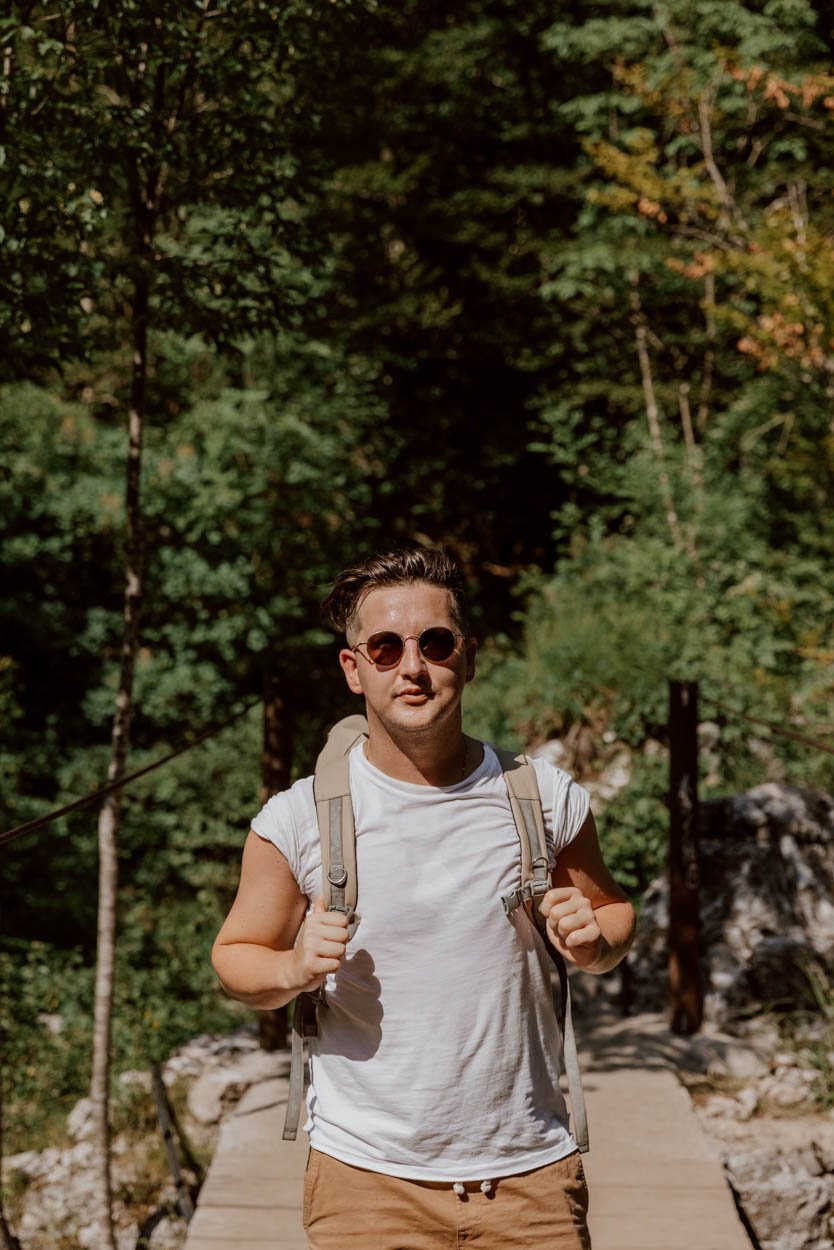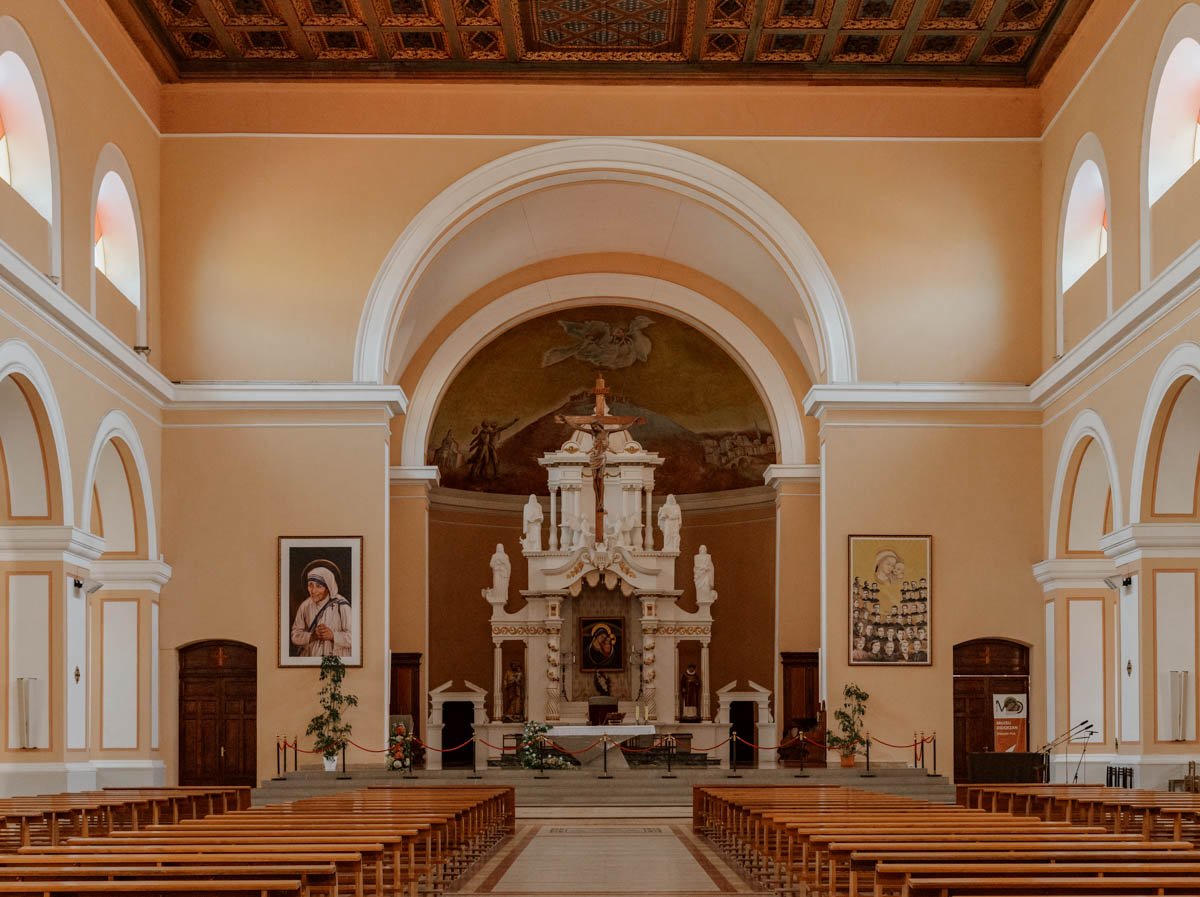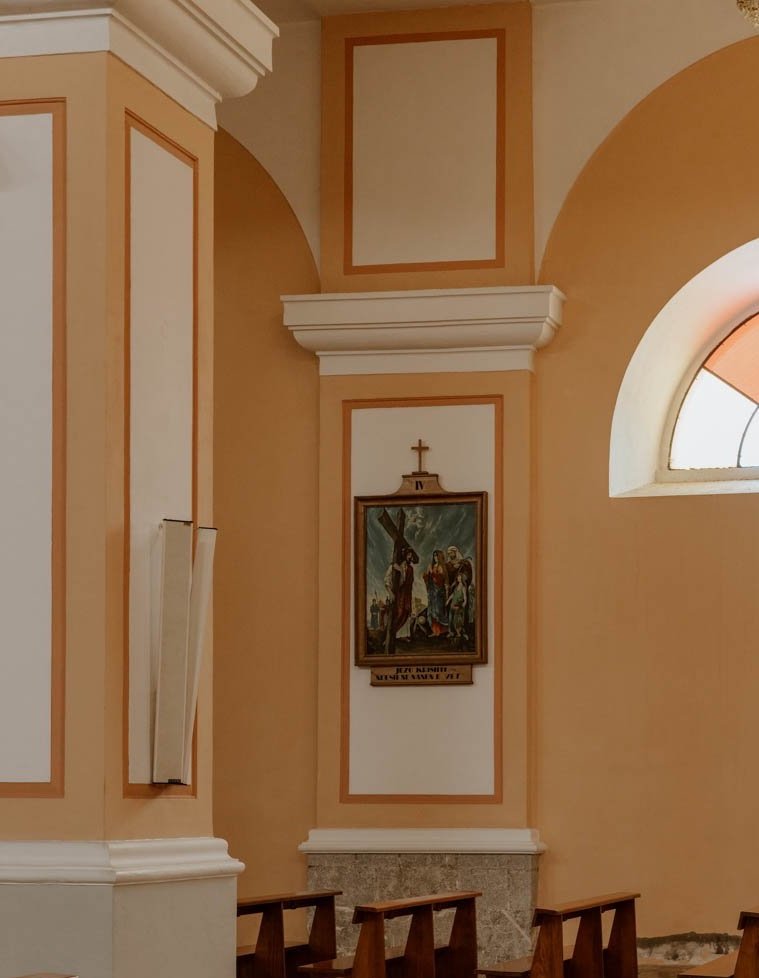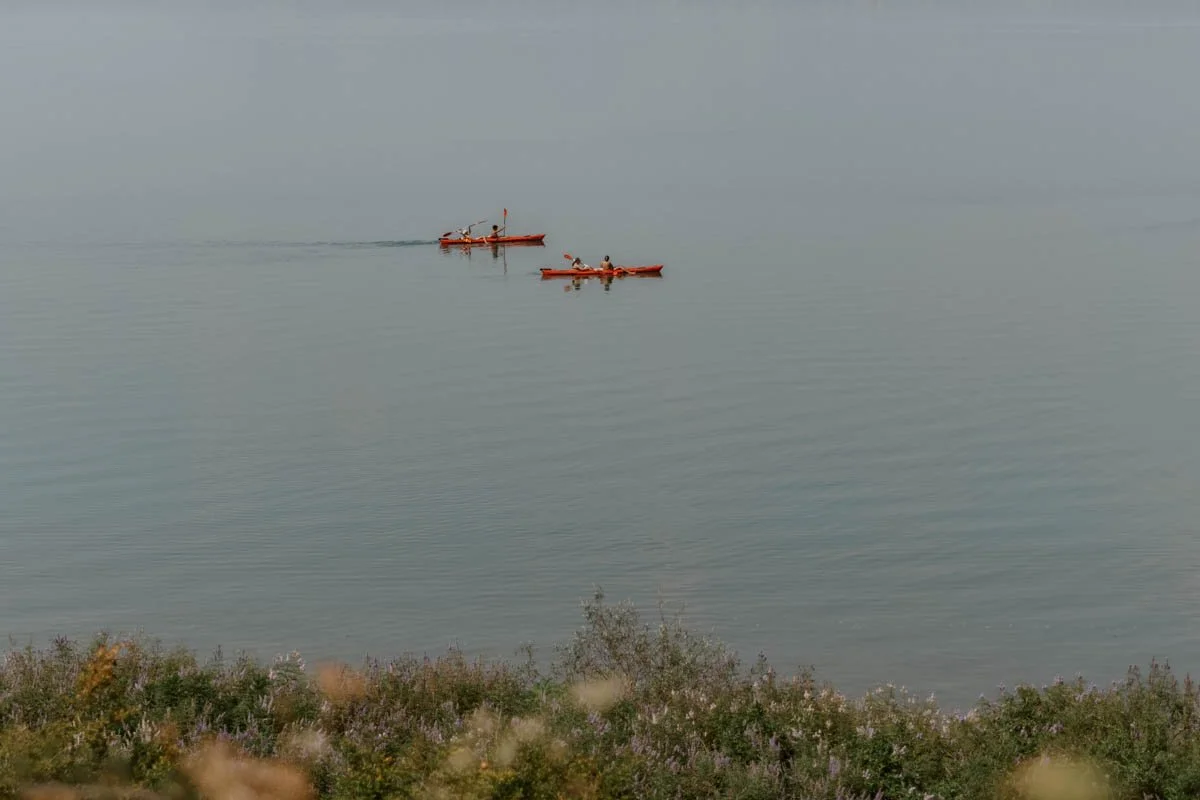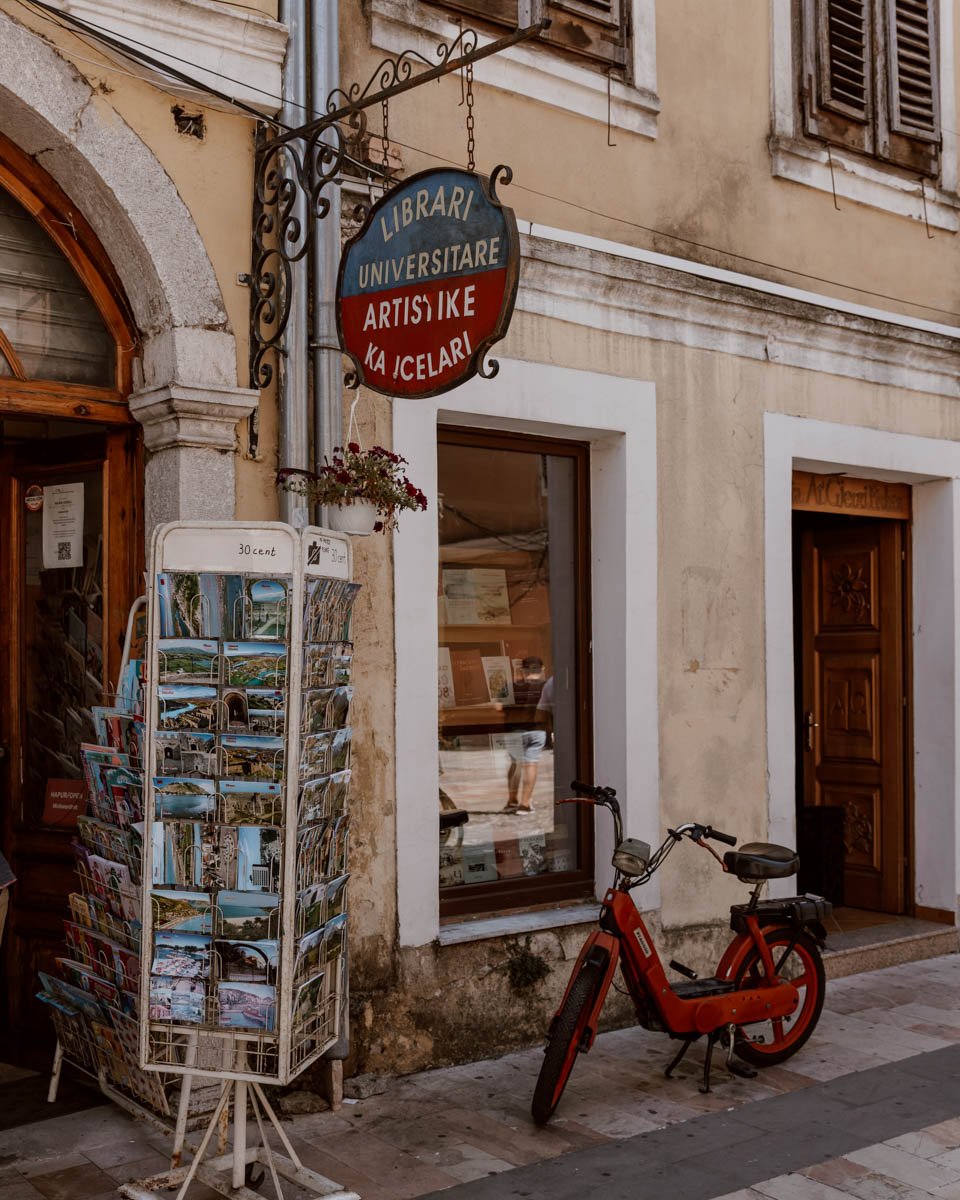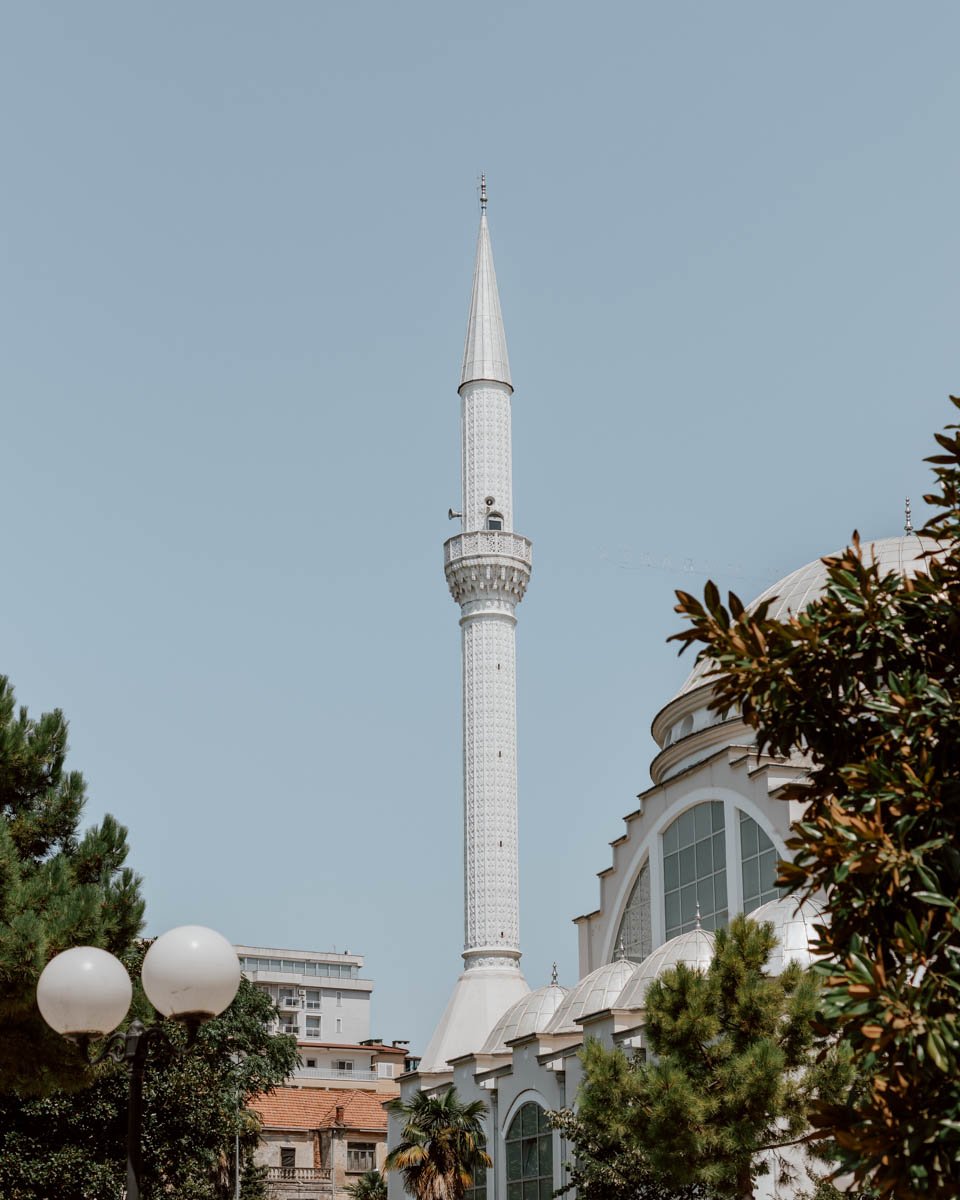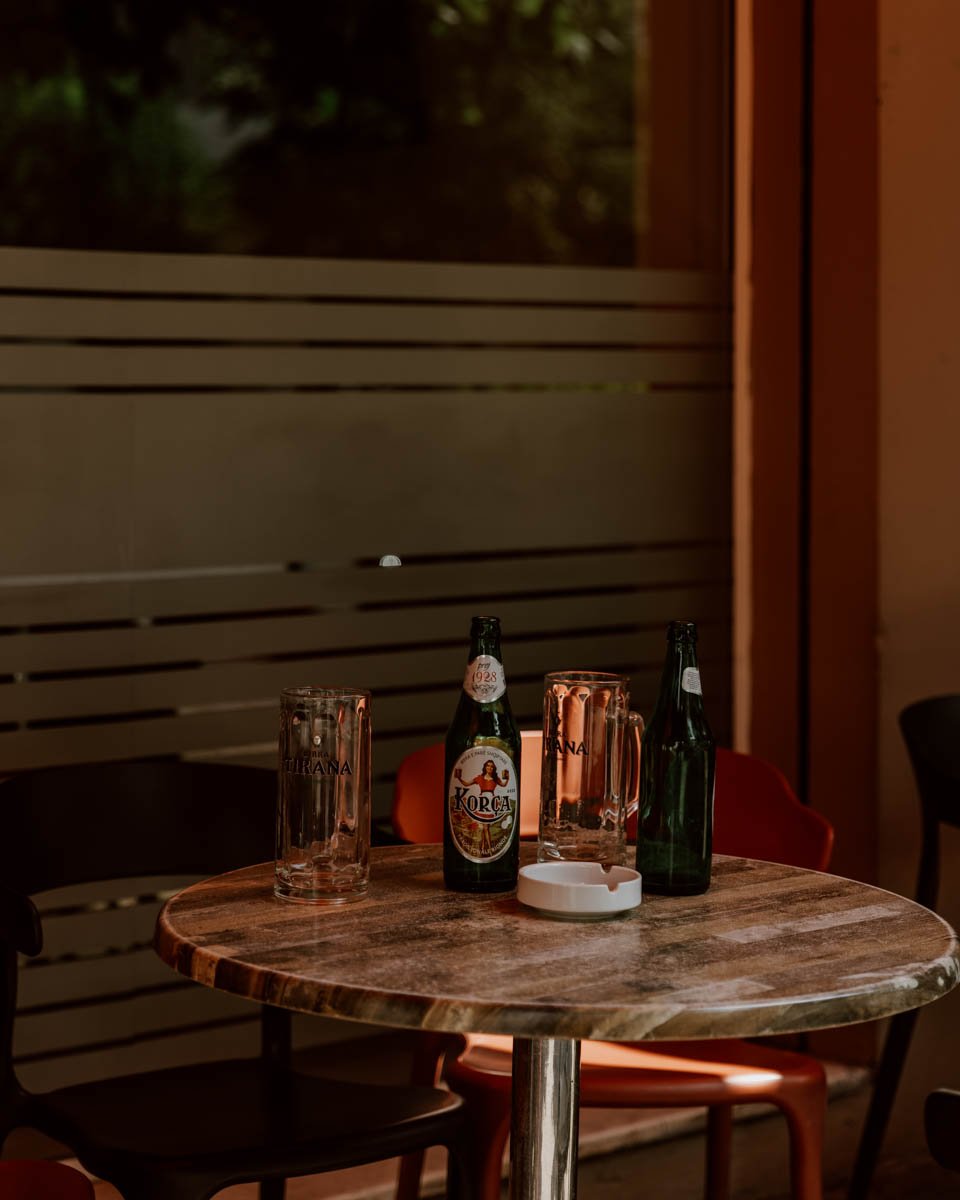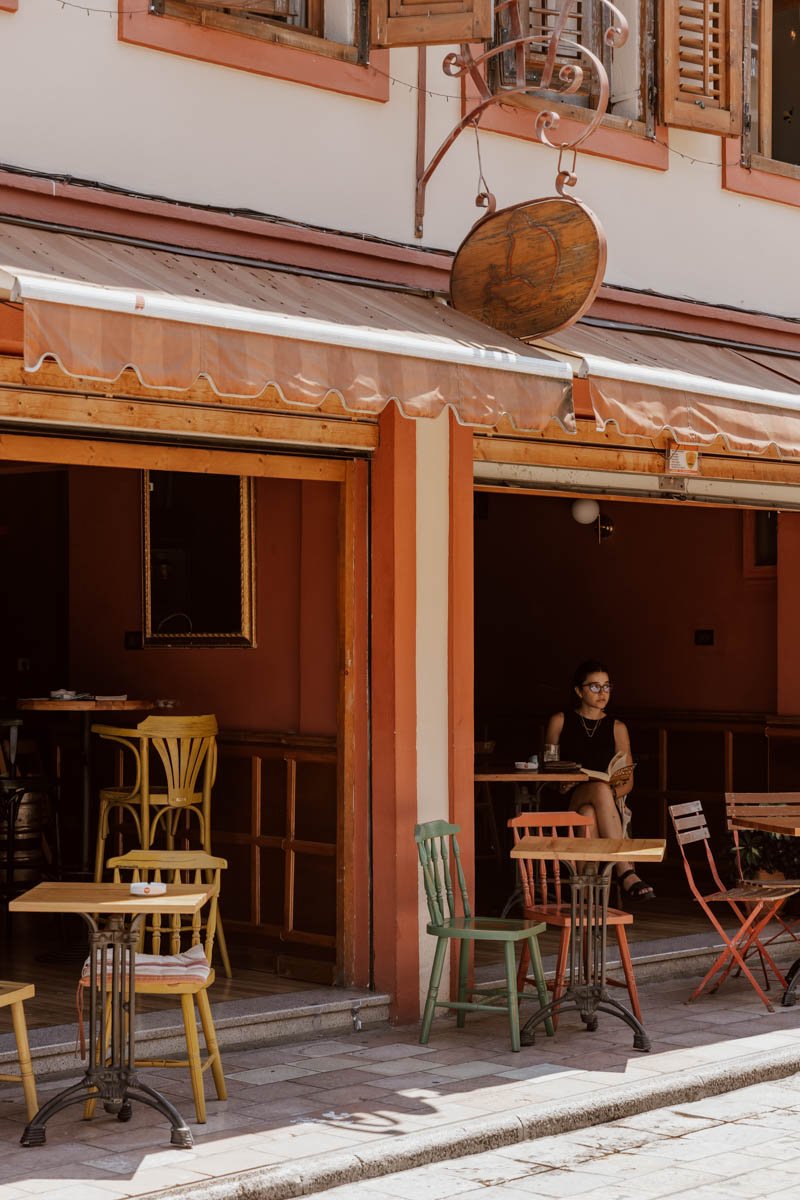Heading to the Albanian Alps? Then you'll probably need to spend a night or two in Shkodër!
Our guide's got you covered!
Shkodër is the gateway to the Accursed Mountains in the far north of Albania.
For some travellers, you'll be heading straight to the city from Tirana's Airport, either skipping or saving the capital for later in your itinerary. For those backpacking the Balkans, Shkodër is your likely first stop after hopping over the border with Montenegro.
Most will ultimately continue on the stunning mountain villages of Theth and Valbonë, but due to the limited transport options, logistics, and routes in and out of the mountains, Shkodër (also known as Shkodra) is a necessary and convenient pitstop from either direction.
Thankfully, it's also a really pleasant city and introduction to Albania, and a worthy addition to any trip; indeed, travellers with no fixed end date often linger a little longer than planned here before or after their time up in the mountains.
We spent three nights in total on our Albania road trip, and are really glad we did.
In this guide, we've shared our favourite things to do in Shkodër, as well as recommendations on where to stay, eat, drink, and how to get around this bicycle-friendly city. We've also included essential information on transport links from the city to the Accursed Mountains and famous Theth-Valbona hike.
This is our guide to Shkodër, Albania
the essentials
What / Fifth-largest city in Albania
Where / 2.5 hours drive from Tirana
Do / Swimming in Shkodra Lake
See / The impressive views from Rozafa Castle
Visit / The Site of Witness + Memory
Drink / Along Rruga G'juhadol
Stay / Shkodra Backpackers Hostel or Hotel Tradita
Plan / Onward routes to Theth-Valbonë
The Best Things to Do in Shkodër
Swimming in Lake Shkodër
Shared by Albania and Montenegro, the largest lake in the Balkans goes by many names: Lake Skadar, Lake Scutari, Lake Shkodër and Lake Shkodra.
A border actually runs through it, with Albania given only a one-third share in comparison to its northern neighbour. In summer, the lake becomes a place for locals to sunbathe and swim on the shores of the clear, clean water, and it's really stunning in certain sections!
A popular option for visitors is to drive or rent a bicycle and follow the overgrown single-track road that runs along the lakeside for about 8km. The highlight is the cluster of hidden away swimming spots and small stoney beach areas, with most entrances and spots unmarked and invisible to the nake eye until you're right on them.
Our favourite spot was Plazhi Zogaj (maps), a free beach with limited roadside parking before and after, so may involve a few minutes walk to opening which takes you a on a short path down to the water.
Another good option was this little public stone beach (maps), where there's a stand to leave your bike at the top of the stone steps, by the road.
There are two small villages along the lake - Shiroka and Zogaj - with the former being bigger and busier with more restaurants, accommodation, water sports rentals, a small beach, paid parking (150 lek), and especially popular with families. We had planned to spend more time at one or both of these but, as there wasn't as much on offer as we'd expected and the lakefront setting was nicer elsewhere, we didn't linger.
How To Get There + Parking | If you have a rental car, it's a 15-minute drive from the city centre, but there are often traffic jams on the bridge over Buna river.
It only about 25-minutes from the start of the lake to the old border checkpoint, but it's all along a very narrow and busy single track road, with very little space to pass if another vehicle is oncoming, so drive cautiously and conservatively. You'll also be stopping at various points along the way, so go slowly and enjoy the ride.
For parking, you need to be a bit more gung-ho, and there are sections where there's a bit more space pull into at the roadside (go as tight as possible and fold in your wing mirrors). If you can't find one next to a beach/swimming hole, then you may simply have to park further up and walk back along the road.
On weekends in the middle of summer, the road, parking and traffic squeeze may become quite unpleasant, so maybe try to avoid that if possible.
Alternatively, join in with the locals and rent a bike! Shkodra Rent Bike (maps) is a highly recommend option in the city centre, with bikes for 700 lek per day and an owner who will give you tips for the lake route and safety.
Note that there is not a designated cycle path all the way from the city to the lake, and it does not go all the way along the lake shore. However, this is a very cycle-friendly city (a carry over from Albanians not being permitted own cars for so many decades), so you should be fine. If going out in peak summer though, please be aware of how how it can be and wear plenty suncream!
Stay // Despite the beauty of certain sections we found, we're not certain that we would have wanted to spend more than a day on the lake unless based at particularly nice accommodations on the water with decent parking, restaurant, and access to a beach/swimming spot.
A couple that looked really good to us, and have excellent reviews as well, were:
If you do stay by Lake Shkoder though, and think that it's actually somewhere that deserves more than a day trip, we'd love to know your experiences and suggestions in the comments!
Good to Know // There is a very impoverished community staying in homes at the entry to the lake, with young women and their children often found begging on the bridge during the regular traffic jams. They can get very close and be very persistent, and continued to ask after we gave change out of the window on our two crossings. Just be aware of this, especially if you are on a bicycle and passing through or stationary due to traffic jams.
Conquer Rozafa Castle
For those of us who arrive knowing mainly about the 20th century story of Albania, it's perhaps the long history of repeated incursions that adds more depth and context to the country's story. Our first stop at the fortified Castle of Kruja introduced us to the national hero of Skanderbeg and holding off the Ottomans, but the imposing Rozafa Castle revealed the deep thread of conquest
The Illyrians are thought to have been the first to settle upon the strategically positioned hill, with the Romans taking it in 167BC. Both the Venetians and the Ottomans destroyed and rebuilt sections, and Rozafa Castle was subject to sieges some five hundred years apart.
The legend goes that the castle is named after Rozafa, the woman in the wall.
Three brothers, frustrated at the walls they built always falling down, were told by an old man that the solution was to secretly trap one of their wives alive within them (obviously). Two of the brothers couldn't bear to do this to their partners, whilst the sociopathic one went ahead and put Rozafa in the walls, on condition that she would be left with three holes: one to feed her newborn son, one to hold him, and another rock his crib. You'll find a statue tribute to here in the castle.
Today, Rozafa Castle lies largely in ruins exposed to the elements, but it’s fun to explore the many intact structures, walls, and series of courtyards. Perhaps the greatest incentive to visit though is to enjoy majestic viewpoints over the verdant countryside and the bright blue rivers, as well as back on to the city; as beautiful as they are, it's a useful reminder of how strategically important this hilltop location was for centuries.
Tickets | Entrance is 400 lek (€4) per person, paid in cash at the little booth
From what we saw, there's definitely a father & son scam going on here with scanning of tickets, which won't affect your visit but is definitely worth keeping an eye on in case it evolves into something else.
There is the small Castle Museum of Shkodër within the site, but we didn't have time to visit. It costs 200 lek in addition, and focuses on objects from Antiquity, the Ottoman period, and the history of the Castle. Within one of the upper courtyards, there's also a pleasant little cafe.
How To Get There | You should set aside about an hour for your visit, and you can find Rozafa Castle here on Google Maps, 5km from the city centre.
Due to their proximity to one another, it's best to pair your castle visit with Shkoder Lake; if you're on a bike, we recommend doing the castle first and just be aware of the steepness and the cobbles as you get closer to the entrance.
If arriving by car, the ascent to the free parking spaces by the entrance may feel like you're not supposed to be on that shiny, steep cobblestone road. However, you should just keep on going up, and you'll find space for about eight well-parked vehicles right by the ticket office (maps)
Unfortunately, a space isn't guaranteed, and that's when you'll be faced with the choice of waiting for someone to leave, doing a very very tight three-point turn to go back on yourself, or reversing back down a bit and turning there. If you're a nervous driver, it may be best to park further down the hill (some may incur a small fee) and walk up to the entrance.
Note that Google Maps driving directions back to Shkoder is a bit bewildering too, so keep an eye on signs as well.
Travel Tip // If you don’t have a car or time to spend a few nights in Shkodër, then you can join this popular day tour from Tirana, which includes the castle, the city, and the lake.
Visit The Site of Witness and Memory
Our research for Shkoder hadn't mentioned anything about 'The Site of Witness and Memory', but it was the most impactful and meaningful exhibits we visited in Albania.
Whilst Tirana's House of Leaves and Bunk'Art focus more on the oppressive role of the secret police during the era of Communist dictatorship, this museum zeroes in on the Enver Hoxha regime's brutal persecution of political prisoners and priests, the banning of religion, and demolition of churches and mosques.
Housed in the one-time orphanage, hospital, and convent that was confiscated and taken over by Ministry of the Interior in 1946 as pre-trial holding cells for political prisoners, it’s the first site in the country to commemorate the victims of Enver Hoxha's Communist dictatorship.
It takes no prisoners in its approach.
The four or five main rooms have quite cramped explainers, but it's well worth taking time to pore over all of them, especially if you aren't aware of what really happened in this country under the isolationist Communist regime from 1944. It also highlights the role of Shkodër and northern Albanian as a hub of resistance.
The photos and archive footage are impactful, educational, and well-curated, but it was the two storeys of dark, cramped concrete holding cells and torture rooms with ivy green doors that really left us feeling cold and in desperate need of a beer and return to the sunshine-filled streets outside. The cell and story of Father Zee Pilumi is particularly harrowing.
This is one of the most important places you'll visit and, for us, something no visitor should skip in Shköder.
Where + When | You can find the Site of Witness and Memory on Bulevardi Skënderbeu, one of the main city centre streets (maps). Unfortunately its opening hours are a bit scattered:
Monday to Saturday | 8.30am-2.30pm
Tuesday and Wednesday | Additional evening openings 5-7pm
It's 9am-12pm on Saturdays, but closed Sundays.
Tickets | Entrance is 200 lek for adults, 100 lek for children (cash only).
Know | In one room and in the cells areas, you are asked to stay stay silent out of respect for the 'people's suffering', and it's important to respect this. The luminous pink arches before this section may initially appear to be a poorly thought out stark contrast to the setting, but their value becomes apparent when they offer a welcome sense of relief at the end of such a brutal journey into the pits of humanity. View the arches as a descent into Dante's inferno as you enter, or a rebirth into the light after hell.
Hang Out In Rruga G'juhadol…
The most hipster-ish area we found in Albania was, surprisingly, in and around Rruga G'juhadol.
A pretty old street with a handful of cafes and restaurants amongst the street art and dilapidated buildings, if you've only got one afternoon or evening, this is a good shout to head toward.
A few places we can personally recommend or that took caught our eye are:
· Goje Gaditese | Stylish, modern coffee shop that evolves into more of a cocktail & wine bar in the evenings. Also serves food all days
· Arti' Zanave | This is a traditional slow food social-enterprise restaurant, and we really wished we had known about it before we arrived and passed it before we'd already eaten elsewhere! The affordable daily menu of Albanian dishes is mostly home cooked, and has plenty veggie + vegan options. They also sell a small selection traditional foods and ingredients to take home.
· Instant | Little wine and snack bar
· M’Shijon | Fancier restaurant option for a splurge
The popular Wanderers Hostel is located on this street, as well as a few tour agencies for excursions to the Albanian Alps.
…And Kole Idromeno & Marubi Gallery
Rruga G'juhadol intersects with Kole Idromeno street, which is a pretty pedestrianised street where the old boys drink coffee in the shade and thoughts of Italy come to mind.
There are several cafes, shops, and restaurants here, and it's a good spot to enjoy a 'xhiro' walk in the early evening or a drink at night. This, along with Rruga G'juhadol, is also one of the social and nightspot hubs in the city.
A few places to look out for:
· The Ebu Bekr Mosque
· Pastiçeri Oraldi Pedonale satisfied our cravings for an iced coffee in the sweltering heat, and offered an excellent selection of sweet treats.
· If it’s gelato you’re craving, stop by Gelateria Bell Italia
· Terrace Lounge Bar has a large terrace overlooking the street that’s a popular place in the evening
· You can find decent pizzas at Muza
If we had been able to visit The Marubi National Museum of Photography, also found on this street, then it would likely have been recommended as one of the best things to do in Shkoder. Though Italian, Pietro Marubi heralded as the man who photographed Albania, with his home and studio in Shkodra
Unfortunately, someone decided to switch out exhibits in the middle of July (rather than doing its before the start of the busiest tourist season), and so it was shut for our entire stay in Shkodër.
We were genuinely gutted, as it was recommended to us as one of the best galleries and culture hubs in the country, so you should absolutely still make time for it.
Tickets cost 700 lek for adults, 210-350 lek for students and concessions, free for children under 12. It's always closed on Mondays, and you can visit the official website for openings times and current exhibitions
Travel Tip // Speaking of Italy, we highly recommend eating at Pasta e Vino (maps). A little backstreet Italian restaurant, the food was really good, the service excellent, and they’ve got a well-priced selection of Albanian and Italian wines.
If you’ve got a car and time on your hands, then consider a drive out to the Kantina Mani winery, 10km outside the city, make sure to add Berat to your plans.
Plan Your Trip To The Albanian Alps
Home of one of the best hikes we've done together and stunning scenery at every turn, the Accursed Mountains were the place that left the greatest impression on us on our two-week road trip.
Today, they’re better known as the Albanian Alps, and most travellers will base themselves in one or both of the mountain villages of Theth or Valbonë in order to hike the Valbona Pass.
Shkodër is place you need to go to in order to access them by public transport, tour, or to break up a long drive north. That’s why at least one night here is necessary on most Albania trips, and it also gives you the opportunity to sort out transport/tours, leave luggage, stock up on supplies, and take out cash (there are no ATMs in the mountains).
Before you firm up your plans, it’s really important to know that there is only one daily bus from Shkodër to Theth, and one to Valbonë (via the Komani ferry), and the lack of availability and alternatives is a factor in some backpackers facing a night or two more in Shkodër than they originally planned.
Whether you access the mountains via Theth or Valbonë also makes a big difference to your overall itinerary.
We have shared much more info on how to get to the Albanian Alps from Shkoder, and the most popular hike to do there, in this post: The Essential Guide to The Theth-Valbona Hike.
If you don’t have a car but wish to travel independently, we’d recommend staying at Shkodra Backpackers Hostel as they’re a wealth of knowledge on getting to and from the mountains (particularly if you wish to go via the lake) and what to do when you’re there.
Alternatively, if you’re short on time or logistics prove too difficult, there are one-day and multi-day tours from Shkoder that will take you into the mountains. The following are highly-rated:
· Full-day tour of Theth & Blue Eye from Shkoder
· Three-Day Hiking Tour of Theth, Valbona Valley & Komani Lake
Travel Tip // Remember, most journeys into the Albanian Alps begin AND end with a night in Shkodër due to the limited roads and transport links. Also, due to snow and ice, several of the most popular hiking trails are not open and safe to do until early June.
Arqipeshkëvia Metropolitane Shkodër Katedralja e Shën Shtjefnit
Don’t worry, we won’t ask you to pronounce that.
The Cathedral of St. Stephen’s tumultuous past serves as microcosm for unique interplay of religion within Albania. It was originally situated within Rozafa Castle until the Ottomans invaded in the 15th century, replacing it with a mosque and banishing bishops outside the city walls. The Cathedral was eventually re-established in 1858 in Shkoder, after decades of campaigning for permission from Istanbul.
The 1967 ban on all religious practices introduced by the Communist regime saw the Catholic Cathedral turned into a sports centre until it was able to reopen in 1991, with a visit by the Pope and Mother Theresa in 1993 still remembered as a significant moment in Albania.
Today, it is the centrepiece of quite a strikingly renovated section of the city centre, with pastel-coloured faux-Italian facades aplenty. Inside, the rebuilt Cathedral is modern and ungilded, with the roof perhaps the most interesting eature.
For some, the fact it’s still here is the most impressive thing.
The attached small Museum Dioqezan (Diocesan) has a collection of religious art and objects, and details the history of Christianity in the region and rebuilding of the Cathedral, but it’s not an essential place for everyone to stop by. It’s open daily from 9am-5pm, and entry is 100 lek (€1)
Travel Tip // We should also mention the Shkoder History Museum (maps). In two rooms of a half-timbered Ottoman house, we ended up not having time for it as more restorative beers than expected were required after the Site and Witness Memory. Reviews from other travellers aren’t great, but it’s only 100lek to enter.
take A Day Trip To Komani Lake
We won't go into all the details of why we ended up skipping Komani Lake, but it basically got sacrificed because of the logistics of driving up to the Albanian Alps.
The bright blue artificial lake was created from a dam & hydroelectric project in the 1970s, where the Drin Valley was submerged by water. Framed by the surrounding mountains, it's viewed as Albania's answer to the Norwegian Fjords, and crossing it by ferry is one way to access the mountain village of Valbonë.
With the increasing tourism in Albania, Komani Lake (maps) is also quickly establishing itself as a place for local and foreign visitors to enjoy photogenic boat and kayaking trips.
The only road to its starts in Shokdër, and you have four main options if you want to pair Komani Lake with the city.
1. Visit on a standalone day trip from Shkodra to ride the ferry, kayak, or go on a 'pleasure' boat trip. This will sometimes include swimming in the Shala River as well. We were close to booking this good value one-day tour offered by the Komani Lake ferry company, which can include a pick-up and drop-off in Shkodër for those without a car.
You'll also see tours offered at hostels and hotels in the city or, alternatively, you could drive out there on your own to meet the tour or the boat companies operating there. However, do be aware options may have reduced since our visit last year, as a bunch of operators got arrested and shut down by the police.
2. Visit Komani Lake as part of your journey from Shkodra to Valbonë, which requires a bus from the city and a ferry across the lake to connect to a bus in Fierze. You can do this by catching the daily 6.30am bus from Shkodër to Komani, then the 9am ferry. It is possible to take your car/van on this ferry too, but note that spaces are very limited.
However, you absolutely need to book your ferry tickets in advance - this is the official website
3. Go to Theth first, do the Valbona Pass hike, then take the ferry from Fierze across Komani, before returning to Shkoder.
4. Visit Lake Komani as part of a multi-day Albanian Alps hiking tour. We have explained the pros, the cons, and the details of Options 2 + 3 in our guide to hiking the Valbona Pass.
However you do it, we'd love to know your perspectives and experiences of whether it's worth going out of your way to visit the lake! We redrafted our Albania itinerary a bunch of times to make it work along with our plans to drive the gorgeous roads up to Theth, but just couldn't spare the extra day.
Travel Tip // The road from Komani to Shkodra was notoriously bad for years but, speaking to a German couple with a camper van, they told us it was in much better condition than they expected, with only a few poor sections, and should be passable for most vehicles. You should factor in about two or so hours for it, and there are free and paid parking places close to the ferries (be aware of overcharging scams).
Where To Stay in Shkoder / Shkodra
Whatever your budget or travel style, there are a few excellent accommodation options in the city. The majority will also let you leave luggage whilst you head up to the Albanian Alps, as well as help you book your bus and/or ferry tickets.
Note that, as most journeys into the Albanian Alps begin AND end with a night in Shkodër, you may end up staying in two separate places due to lack of availability (which we did).
If you’re doing an Albania road trip, it’s much more convenient to book somewhere that has private on-site parking or garages, but not all offer this.
We’ve done the hard work for you, and shared our favourites and good alternatives below:
Shkodra Backpackers Hostel | Also known as Mi Casa es Tu Casa, this is the sort of old school hostel we love. Owned and run by a lovely woman who cares deeply about how guests experience the country, it offers fantastic private rooms and dorms, wonderful communal areas and a guest kitchen. It also has a bunch of rescued street dogs.
Hotel Tradita | This popular hotel is where we stayed when we returned from the mountains, knowing that we’d want a nice room for a well-deserved rest - it definitely fit the bill. They offer an excellent breakfast and is very popular for traditional dinners in the evening with a live music show - not really our cup of tea, but many travellers really enjoy it.
The Wanderers Hostel | Another super popular hostel (it has hundreds of amazing reviews and a rating of 10/10 on Hostelworld - you don’t see that very often!), it’s family run and really quite lovely with several pleasant outdoor areas, private parking, a guest kitchen, dorms and privates.
Atelier Boutique Hotel | This hotel, located on a popular pedestrianised street in the historic centre, is a good option if you prefer a more contemporary feel to where you stay (but with a few ill-chosen antiques for a bit of creative flare).
Çoçja Boutique Hotel | This popular and very highly-rated hotel is the most expensive on this list, but a really beautiful option. Large, comfortable rooms that have been decorated very tastefully, a wonderful terrace area, super helpful staff and an excellent breakfast.
Hotel Loredano | Offers simple but comfortable and modern rooms on Rruga G'juhadol. It has excellent rooms and offers free breakfast in their lovely restaurant.
How To Get To Shkoder
From Tirana Airport
Drive | It’s a 2.5 hour, 100km drive from Tirana. On our road trip, we went via the historic town of Kruja before continuing on to Shkodër.
Taxi | An official charges between €55-62
Bus | The bus from Tirana to Shkoder departs from the Regional Bus Terminal, to which you’ll need to take a taxi. The buses depart daily between 6.30am and 5pm and cost 400 lek per person
From Theth
Drive | It’s a 2 - 2.5 hour drive from Shkoder to Theth (longer if you want to stop for photos, or you’re not confident travelling on super narrow winding roads).
Bus | There is one minibus per day departing at 11am, taking approximately 2 - 2.5 hours. A single ticket costs €10 per person, and this should be booked with your guesthouse in Theth.
From Montenegro
Drive | If you plan to drive across the border from Montenegro to Albania, you’ll need to inform your car rental beforehand and purchase Green Card - this is an international certificate that shows your hire car is covered with basic insurance. The Green Card costs €42.35. Be aware that some rental companies will charge an additional €10 for taking the vehicle across the border so if you plan on visiting both countries, it’s a good idea to check this first to avoid any nasty surprises when picking it up!
From Podgorica, you’ll drive across the ‘Hani I Hotit – Bozaj’ border to access Shkoder. The border is open until 10pm each day.
Bus | There are multiple departures from Montenegro to Shkoder. From Podgorica (the nearest likely stop on the tourist trail) it takes 1 hour and 50 minutes to reach Shkoder by bus, crossing the border at Bozaj. A ticket costs approximately €10 per person.
Travel Tip // We recommend looking + booking your car hire via Rentalcars and AutoEurope (these are the two companies we use exclusively for all our car rentals around the world).
Before you decide to rent or road trip, make sure to read our main post full of advice: The Essential Guide To Driving in Albania
Travel Better Tips
There are a few fruit seller stalls and individuals along the city centre streets, as well as some small supermarkets. It’s a good idea to stock up here on various items you want for hiking in the mountains as options are more limited, and prices higher, once you’re in Theth or Valbonë.
· You’ll find several banks and ATMs in by the large roundabout by the mosque, and you need to withdraw cash here for any adventures in the Albanian Alps as there are no ATMs up there.
As we explain in 23 Things To Know Before You Visit Albania, all of the country’s ATMs tend to charge a hefty withdrawal charge, even for bank cards that you often get free withdrawals with.
The Credins one (maps) charged 600 lek, whilst the nearby Raiffeisen Bank one wanted a crazy 800 lek. If you find a better option, let us know in the comments, and always remember to decline the conversion.
· Near the roundabout, you’ll also find the 'ONE' mobile phone shop to purchase a local SIM card if you didn’t manage to get this sorted in Tirana or the airport.
· It’s not recommended to drink the tap water in Shköder, but good hostels will provide filtered water for your own refillable bottles. We also brought our trusty filter bottles to Albania and they did the job, and we highly recommend the 75CL Active Water-To-Go.
To find out more about how these work and save money, read this post: The Best Travel Filter Water Bottles For Your Next Trip
· If visiting Shkoder in spring, you may also wish to take a walk, cycle, or quick drive out to Mesi Bridge (maps). Built by the Turkish, and crossed over by a retreating Serbian army in the First World War, it’s vey photogenic when the bright blue water is flowing under it, but this all dries up in the summer months.





